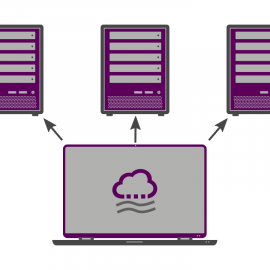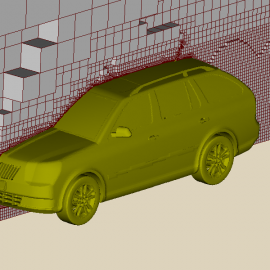This article is a user guide to the new field-based Lagrangian functionality in OpenFOAM. This is a new implementation of Lagrangian functionality where data is stored as fields rather than in the objects representing particles or parcels (particle-based Lagrangian). It will ultimately replace the original particle-based Lagrangian and is 65% complete and available in OpenFOAM-dev. Field-based Lagrangian has the advantages of: better extensibility, since fields can be simply added; greater efficiency of fewer function calls using field algebra; greater code reuse due to consistency with the rest of OpenFOAM.
Productive CFD: OpenFOAM Training Course

CFD Direct is delighted to announce Productive CFD, their new CFD Training course with OpenFOAM. The course was created by Chris Greenshields and Aidan Wimshurst drawing on the experience of Chris’s 16 years of OpenFOAM Training and Aidan’s Fluid Mechanics 101 channel. The course focuses on performing high quality CFD with OpenFOAM, rather than merely operating the CFD software. It explains how to get better, relevant results in fewer attempts, identifying and fixing issues quickly and with confidence. The course is split into 2 parts, each of 2 days duration, and is delivered in person with 2025 dates of 15-18 September 2025, Cologne, Germany and 20-23 October 2025, Chicago, USA.
CFD Book for OpenFOAM

CFD Direct is delighted to announce its publication of a book Notes on Computational Fluid Dynamics: General Principles. The book is written for people who use CFD in their work, research or study, providing essential knowledge to perform CFD analysis with confidence. It offers a modern perspective on CFD with the finite volume method, as implemented in OpenFOAM and other popular general-purpose CFD software. Fluid dynamics, turbulence (and RAS modelling) and boundary conditions are presented alongside the numerical methods and algorithms in a series of short, digestible notes.
Cloud CFD Course | OpenFOAM

CFD Direct announces the release of their new 1 day Cloud CFD course, the fourth course in their portfolio of OpenFOAM Training. The course enables users to run CFD with OpenFOAM on AWS, training the tools and processes for inexpensive, secure, efficient cloud use. The course addresses the main concerns of using public cloud: cost management, security, efficient CFD and data management. It exploits the cost benefits of cloud: meeting fluctuating demand for hardware at a cost that represents consistent, high utilitisation; and using cheaper, spare capacity, with an application that does not require 100% availability.
Computational Fluid Dynamics

Fluid dynamics is concerned with the motion of fluids (liquids and gases) and the forces on them. “Computational” refers to computation of the flow and forces using numerical analysis. We define “computational fluid dynamics” as “the prediction of fluid motion and forces by computation using numerical analysis, generally extended to include heat, thermodynamics, chemistry and solids”. This definition covers a broad range of calculations for numerous scientific and engineering applications, in particular involving heat.
Energy Equation in OpenFOAM

This article provides information on the equation describing conservation of energy relevant to fluid dynamics and computational fluid dynamics (CFD). It first assembles an equation for combined mechanical and thermal energy, i.e. total energy, in terms of material derivatives. It then presents an equation for thermal, or internal, energy. The total energy equation is then provided in terms of local (partial) derivatives, both in terms of internal energy and enthalpy. The implementation of the energy equation in solvers in OpenFOAM is then described.

